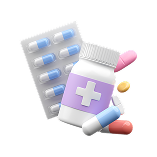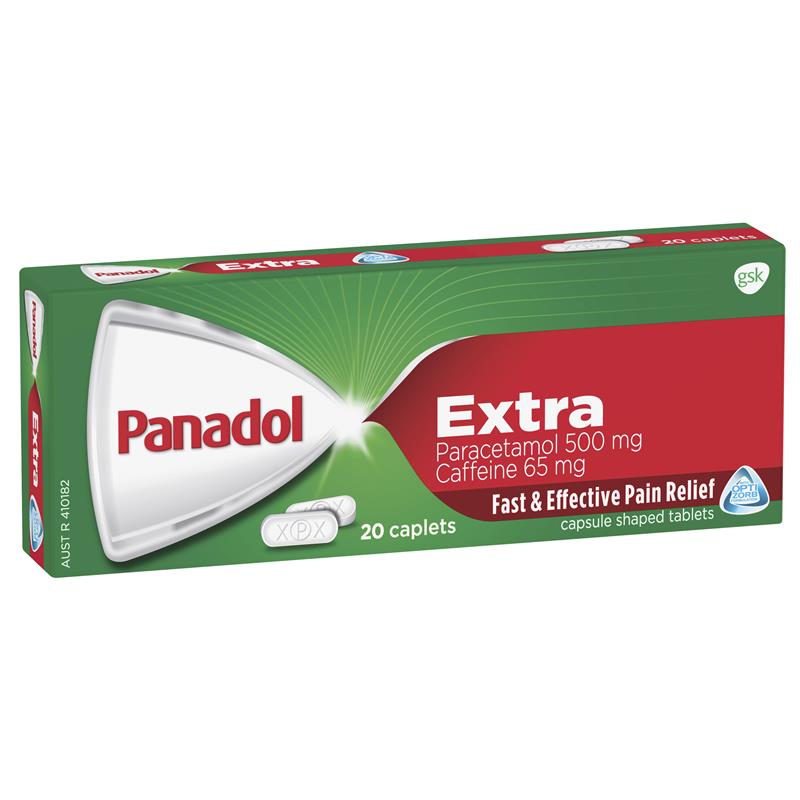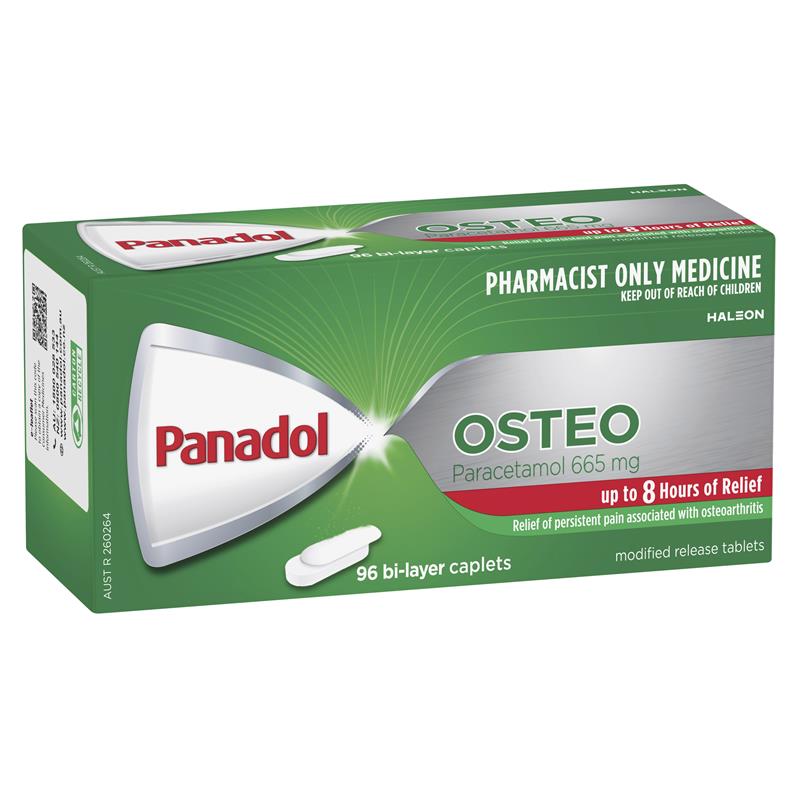See Other Available Options
Codral PE Day & Night 48 Tablets
USD $1.00
Codral Cold & Flu + Cough Day & Night 48 Capsules
USD $1.00
Codral PE Cold & Flu 48 Tablets
USD $1.00
Panadol Extra (Paracetamol & Caffeine) 20 Caplets
USD $1.00
Panadol Rapid (Paracetamol) Pain Relief 500mg 40 Caplets
USD $1.00
Panadol Osteo 665mg 96 Caplets
USD $1.00
Details
Dispensing Country :
India
Acetaminophen (Paracetamol)
Compared with: Blackmores Conceive Well Gold 28 Tablets + 28 Capsules
Acetaminophen, also known as Paracetamol, is a widely used over-the-counter pain reliever and fever reducer. It is commonly used to treat mild to moderate pain such as headaches, muscle aches, menstrual cramps, and fever. Acetaminophen is considered safe when used as directed and is often recommended as the first-line analgesic in pregnancy.
Acetaminophen (also known as Paracetamol) – Available in 500 mg, 650 mg, and 1000 mg strengths.
Other Popular and Common Names
Paracetamol
APAP (N-acetyl-para-aminophenol)
Tylenol (brand name in the US)
Panadol (brand name globally)
Feverall (suppository form)
Calpol (liquid for children)
Acetaminophen works centrally in the brain by inhibiting the enzyme cyclooxygenase (COX), particularly COX-2, which is involved in the synthesis of prostaglandins responsible for pain and fever. Unlike NSAIDs, it does not exhibit significant anti-inflammatory activity and does not inhibit COX-1 in peripheral tissues, hence has minimal gastrointestinal side effects.
Fever reduction (antipyretic)
Pain relief (analgesic) including:
Headache
Toothache
Muscle aches
Menstrual cramps
Joint pain (arthritis)
Back pain
Post-operative pain
First-line analgesic in pregnancy and children
Dosage & Administration
Adults and children over 12 years:
Typical dose: 500 mg to 1000 mg every 4 to 6 hours
Maximum daily dose: 4000 mg (4 g) in 24 hours
Do not exceed 1000 mg per dose or 4 doses in 24 hours
Use for no more than 3 consecutive days for fever or 10 days for pain without medical advice
Children (under 12 years):
Dose based on weight: 10–15 mg/kg per dose, every 4 to 6 hours
Maximum 5 doses per 24 hours
Oral tablets
Caplets
Liquids (syrups)
Suppositories
Soluble powders
Extended-release tablets (for osteoarthritis)
Prescribing Information
Route of administration: Oral, rectal
Form: Tablets, caplets, liquid, suppository
Strengths: 500 mg, 650 mg, 1000 mg
OTC Availability: Yes (also available as prescription combinations)
Safety Information
Pregnancy: Category A – Safe in all trimesters
Breastfeeding: Considered safe in standard doses
Children: Safe when dosed appropriately by weight
Elderly: Generally well-tolerated; monitor liver function with chronic use
Liver disease: Dose adjustment or avoidance required due to hepatotoxic risk
Common (rare at therapeutic doses):
Nausea
Rash
Drowsiness
Liver damage (hepatotoxicity)
Acute liver failure
Kidney damage
Hypersensitivity reactions (anaphylaxis, angioedema, Stevens-Johnson Syndrome)
Warnings & Cautions
Do not exceed recommended dose – Risk of severe liver damage
Avoid alcohol during use
Avoid simultaneous use of multiple medications containing acetaminophen
Seek immediate medical help if overdose is suspected
Chronic use may require monitoring of liver enzymes
Therapeutic Class: Analgesic, Antipyretic
Pharmacologic Class: Non-opioid Analgesic
Legal Status: Over-the-Counter (OTC) and Prescription (in combination products)
Alcohol: Increases the risk of liver damage
Warfarin: Prolonged use may increase INR; monitor closely
Isoniazid or Rifampin: Increased hepatotoxicity risk
Phenytoin, Carbamazepine, Barbiturates: May reduce acetaminophen efficacy or increase hepatotoxic risk
Cholestyramine: May decrease absorptio
A 2011 meta-analysis in The Lancet confirmed the efficacy of acetaminophen in treating non-inflammatory pain with fewer gastrointestinal side effects compared to NSAIDs.
Widely recommended by NICE and WHO as the first-line analgesic for mild to moderate pain and fever, including during pregnancy.
Comparison with Blackmores Conceive Well Gold
Acetaminophen addresses symptom relief such as fever and pain, while Blackmores Conceive Well Gold provides nutritional and hormonal support for conception. Both may be used concurrently under medical supervision, especially if a woman preparing for pregnancy requires short-term fever or pain relief, making acetaminophen the preferred analgesic during preconception and pregnancy.
FAQs – Acetaminophen (Paracetamol)
Q1. What is acetaminophen used for?
A: It is used to relieve pain and reduce fever. It does not reduce inflammation but is effective for headaches, fevers, and muscle pain.
Q2. Is acetaminophen safe during pregnancy?
A: Yes. It is considered the safest pain reliever during all stages of pregnancy when used as directed.
Q3. Can I take acetaminophen daily?
A: It’s safe for short-term use. Prolonged daily use should be under medical supervision, especially to avoid liver toxicity.
Q4. What happens if I overdose?
A: Overdose can cause life-threatening liver damage. Seek emergency medical attention even if symptoms are not immediate.
Q5. Can I use acetaminophen with other medicines?
A: Yes, but ensure they do not contain acetaminophen to avoid accidental overdose. Check labels of cold or flu medications.
Q6. How quickly does it work?
A: It typically starts working within 30–60 minutes, with effects lasting about 4–6 hours.
Q7. Can I use it for arthritis?
A: Yes, especially osteoarthritis, but it does not reduce joint inflammation like NSAIDs.
WHO Model List of Essential Medicines: Acetaminophen is included for its safety, availability, and efficacy.
Cochrane Review 2016: Found acetaminophen moderately effective in acute pain, well-tolerated, and with fewer GI side effects.
ACOG Guidelines: Recommend acetaminophen as the analgesic of choice in pregnancy.
Acetaminophen, Paracetamol, Non-Opioid Analgesic, Pain Reliever, Fever Reducer, OTC Medication, Pregnancy Safe, Headache Treatment, Antipyretic, Liver Safety, EZ Chemist, Mild Pain Relief, Cold Flu Pain Relief





